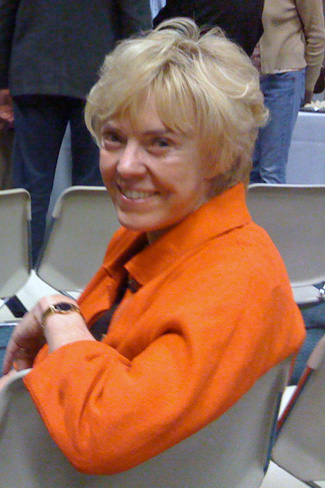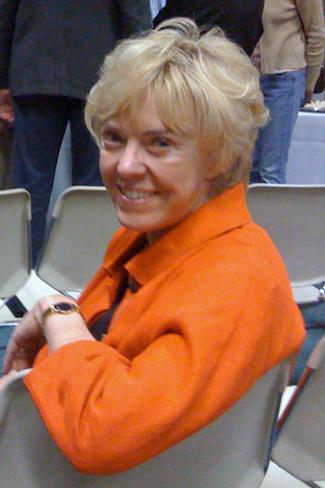
Suzanne Muchnic
It was one of our greatest fears for years. Something those of us in the art community discussed occasionally and hoped would never happen—the retirement of Suzanne Muchnic. Then, last month, we read the post on the Los Angeles Times’s Reader Representative blog that after thirty-one years, she was stepping away from her long-held position as arts reporter.
The phrase “veteran arts journalist” was practically created for Suzanne. You’ll be hard pressed to find anyone in town, from curators to publicists, who don’t hold her in the highest regard. Suzanne just got it. She understood museums, she understood art, and she was incredibly deft at weaving compelling, honest stories. It goes without saying that we’ll miss her. So, on the occasion of her retirement, we thought we’d ask her to take a look back. Somehow, after reading her thoughtful answers to our questions, I appreciate her even more than I already did.
How did your appreciation of art change in three decades of writing about it? Did you start out liking one genre and move on to others?
I was primarily interested in contemporary art when I started writing, but over the years I developed a much deeper knowledge and love of art history. One of the best things about my job was that it was an ongoing education. In newspaper terms, I was a specialist because I wrote almost exclusively about visual arts. In fact, I was a generalist, forever exploring things that required as much research and reading as deadlines allowed.
What was the first show you reviewed as a staff writer for the LA Times, and the last?
I freelanced for the LA Times for about a year before I joined the staff. My first review published in the paper, in 1977, covered a show of Bill Davison's prints at USC and an exhibition about performance art at the Los Angeles Institute of Contemporary Art. My first review as a staff writer was about Paris-Berlin: Reports and Contrasts from France and Germany, 1900–33 at the Pompidou Center in Paris. I stopped reviewing around 1990 and began devoting all my time to news and features. My last feature written while I was on staff, to be published Jan. 10, is about The Art of Native American Basketry: A Living Tradition, an exhibition at the Autry National Center.
We were recently talking about the notion of the “L.A. Artist.” Is the term useful to you? Do the artists of the region have something in common other than where they work?
The term might seem limiting or hopelessly old-fashioned, but I always want to know where an artist lives and works, and how that fact might shape or influence the work. "L.A. artists" come from all over the world, but there's something about the region's light, space, climate, and sense of possibility that distinguishes the work of many who choose to work here.
Which artist gave the best interview? And the worst?
I don't think there was a best or worst, just many memorable conversations. One of my favorites was with Lee Bontecou at her home on a Pennsylvania farm, reached by a series of dirt roads. I talked to her just before she ended a long retreat from the art world with a retrospective exhibition at the Hammer Museum.
Do you see art criticism migrating away from print, and if so what effect does this have on the quality of the coverage?
Journalism is certainly migrating away from print, but we are in the midst of such a profound transition that it's probably foolhardy to predict the future. In the long run, I think there will be a place for thoughtful art criticism and feature articles. At the moment, though, the push to be first and get the most hits with celebrity coverage seems overwhelming.
Do you look forward to seeing shows without having to write about them?
I have always gone to see shows that I didn't write about and I'm sure I will continue. It can be fun to look without a reporter's sense of responsibility, but having that responsibility has tremendous rewards.



